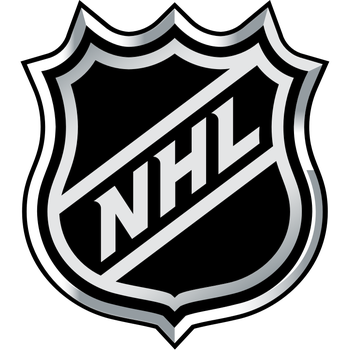4 MINS AGO • NHL.COM

NHL 8 GAMES today
8 GAMES today
Blackhawks host two Make-A-Wish teens at practice | NHL.com 14-year-old, 16-year-old participate in shootout contest
Thompson gifted homemade ornament by young Capitals fan | NHL.com Washington goalie reunites with 7-year-old cancer survivor
4 MINS AGO • NHL.COM
Guenther gets 1st NHL hat trick, Mammoth cruise past Islanders | NHL.com Schmaltz, Sergachev each has 3 points for Utah; Horvat injured for New York
4 MINS AGO • NHL.COM
Panthers have mixed emotions on Canada roster for Olympics | NHL.com ‘Incredible feeling’ for Marchand, but ‘there isn’t much you can say’ after Bennett doesn’t make cut
4 MINS AGO • NHL.COM
Fox says not making U.S. team for Winter Olympics 'disappointing' | NHL.com Rangers defenseman discusses decision ahead of official roster release Friday
4 MINS AGO • NHL.COM
Dylan Guenther has 1st career hat trick to send Mammoth to 7-2 victory over Isles
Dylan Guenther had his first career hat trick and added an assist and the Utah Mammoth topped the New York Islanders 7-210 MINS AGO • Associated Press
UBS Postgame Photos: Islanders 3, Blackhawks 2 SO | New York Islanders The official National Hockey League website including news, rosters, stats, schedules, teams, and video.
10 MINS AGO • NHL.COM
UTA@NYI: Schaefer scores PPG against Karel Vejmelka | New York Islanders Matthew Schaefer (NYI) scores power-play goal against Karel Vejmelka (UTA) to make it 2 - 5
10 MINS AGO • NHL.COM
Nick Schmaltz with a Goal vs. Utah Mammoth | New York Islanders Nick Schmaltz (New York Islanders) with a Goal vs. Utah Mammoth, 01/01/2026
10 MINS AGO • NHL.COM
UTA at NYI | Recap | New York Islanders Game-changing highlights from the matchup between the Utah Mammoth and the New York Islanders
10 MINS AGO • NHL.COM
Blackhawks Head Coach Jeff Blashill Has Thoughts on Connor Bedard's Olympics Snub - Bleacher Nation One year ago, the Blackhawks were sorting thru an interim head coaching situation and an awful performance in the Winter Classic. Not many p...
11 MINS AGO • BLEACHERNATION.COM
Mammoth vs. Islanders | NHL Highlights | January 01, 2026
12 MINS AGO • YOUTUBE
Mammoth's Dylan Guenther Pots First-Career Hat Trick Vs. Islanders
41 MINS AGO • YOUTUBE
Morrissey | 26.01.01 | Winnipeg Jets Josh Morrissey on getting the Olympic call, his excitement sharing the news, and more.
44 MINS AGO • NHL.COM
Arniel | 26.01.01 | Winnipeg Jets Scott Arniel on Josh Morrissey making the Olympic team, last night’s game against Detroit, and more.
44 MINS AGO • NHL.COM
Drake Batherson Postgame Media vs WSH | Ottawa Senators Hear from forward Drake Batherson following the Senators game against the Washington Capital at Canadian Tire Centre.
47 MINS AGO • NHL.COM
Thomas Chabot Postgame Media vs WSH | Ottawa Senators Hear from defenceman Thomas Chabot following the Senators game against the Washington Capital at Canadian Tire Centre.
47 MINS AGO • NHL.COM
WSH @ OTT | 0101 | Ottawa Senators The official National Hockey League website including news, rosters, stats, schedules, teams, and video.
47 MINS AGO • NHL.COM
David Perron Postgame Media vs WSH | Ottawa Senators Hear from forward David Perron following the Senators game against the Washington Capital at Canadian Tire Centre.
47 MINS AGO • NHL.COM
Travis Green Postgame Media vs WSH | Ottawa Senators Hear from Head Coach Travis Green following the Senators game against the Washington Capital at Canadian Tire Centre.
47 MINS AGO • NHL.COM
Zetterlund, Senators rally for win against Capitals | Ottawa Senators Scores with 2:22 remaining after Ottawa trailed 2-0; Washington has lost 5 of 7
47 MINS AGO • NHL.COM
Spencer Carbery | Postgame | Washington Capitals Spencer Carbery speaks to the media postgame
50 MINS AGO • NHL.COM